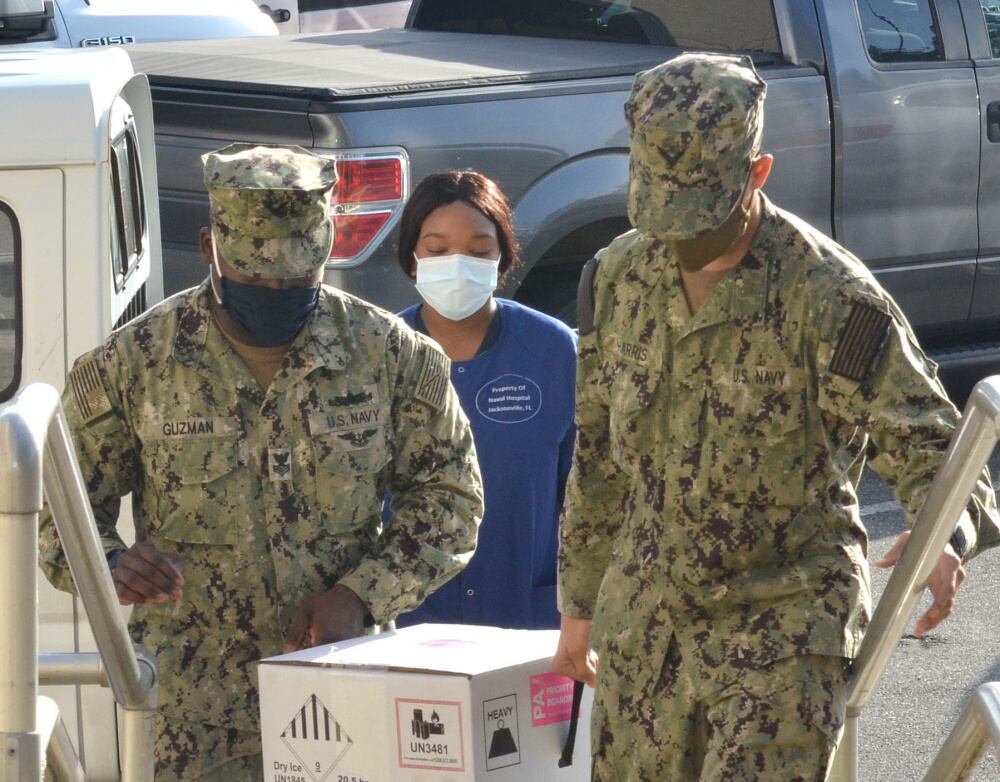For one petty officer at a Norfolk shore command, the past year has entailed wondering if the next shipmate coming through the door had the coronavirus, while concurrently helping sailors understand what to do if they suspect they are positive and shouldering more work when sailors needed to isolate.
Masks are mandatory on base, but the petty officer also conceded that “we get sloppy in our shop.”
On their second day in a new workspace last year, a sailor came to check in but didn’t tell anyone he had just been tested for COVID, according to the petty officer, who requested anonymity for fear of retribution.
His positive result came back the second day he was there, and coworkers had to isolate and get tested.
“We have a revolving door of people exposing themselves to us,” the sailor said.
Colleagues sometimes let their masks down, and the petty officer also worries about a lack of other protections.
“We don’t have any plexiglass in our shop, we don’t have any signs talking about social distancing,” the sailor said this fall. “We just have a bottle of hand sanitizer by the door.”
RELATED

Other sailors in the unit have called the Navy’s COVID hotline to report symptoms, but didn’t mention their symptoms to their coworkers, according to the petty officer.
It’s also been a challenge to get sailors who fear they have COVID to not come into work and potentially infect others.
In pre-pandemic times, sailors are taught that, when they’re sick, they need to come in and tell their chain of command that they need to go to medical.
“For so long in your career, you don’t get sick days,” the petty officer said. “When you wake up and don’t feel 100 percent, you’re still going to go to work. Before the pandemic, I had to haul my sick ass into work and go see Doc and he would decide.”
“The expectation has always been, get to work and tell your supervisor what’s going on so you can at least muster and won’t be UA so your ass doesn’t fry,” the petty officer said.
But this year, a sailor possibly infected with COVID might infect others if he or she musters.
“Kids come in and say they need to call the hotline,” the petty officer said. “I say, ‘Why are you standing here? Go!’”
At the same time, some in the unit are suspicious that those getting tested and who get a few days of at-home isolation waiting for results are just skating.
“It could be malingering, but it could never be proven,” the petty officer said.
Such units are already running on “a small margin of error” when it comes to having enough people to do the job, according to the petty officer.
“We feel the burden of even one person going down temporarily,” the petty officer said. “That work doesn’t just disappear, even here on shore duty. I can’t imagine on the waterfront.”
Geoff is the managing editor of Military Times, but he still loves writing stories. He covered Iraq and Afghanistan extensively and was a reporter at the Chicago Tribune. He welcomes any and all kinds of tips at geoffz@militarytimes.com.





